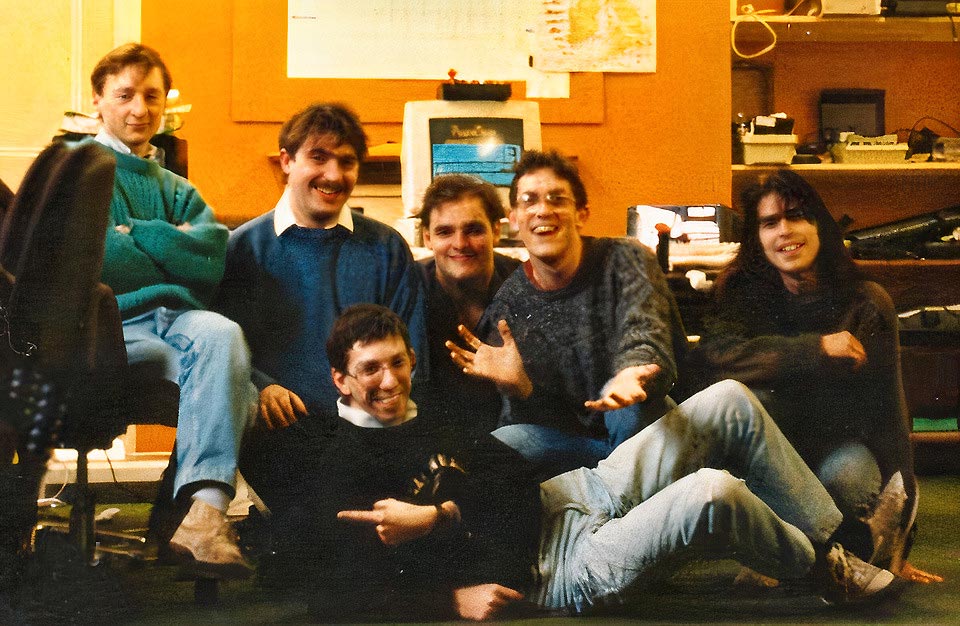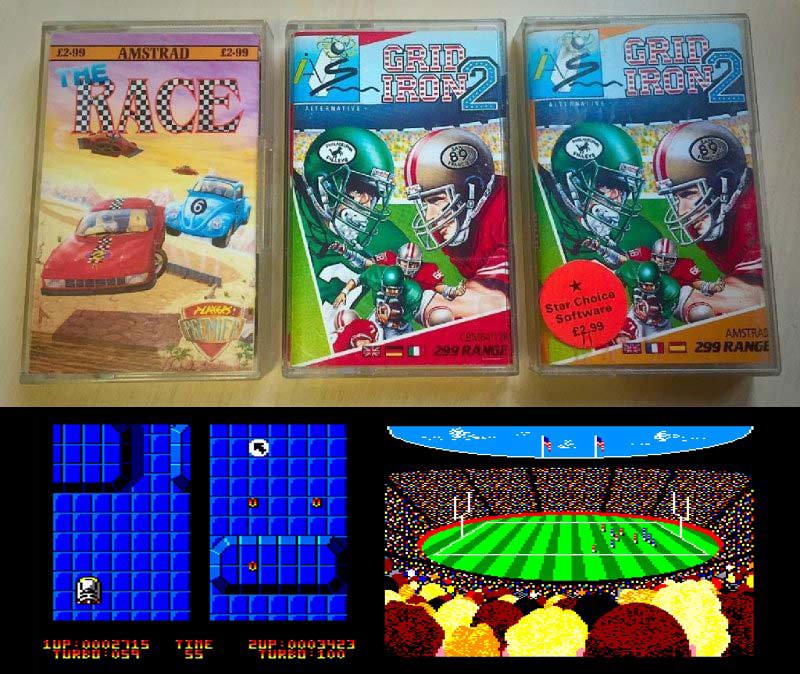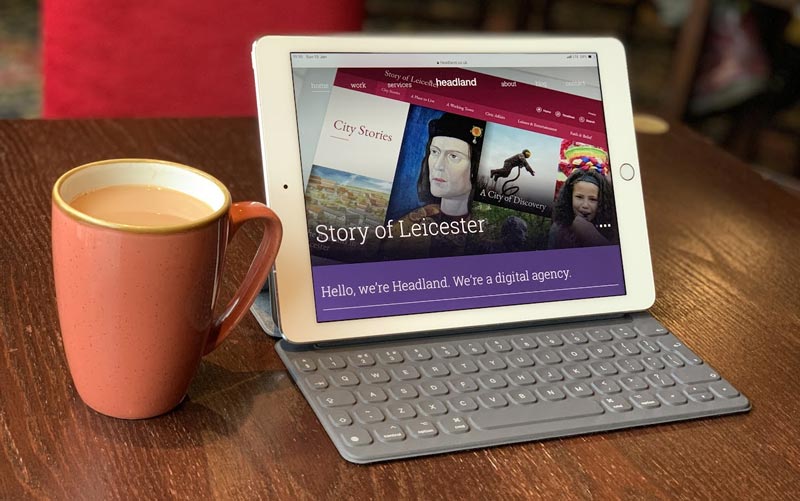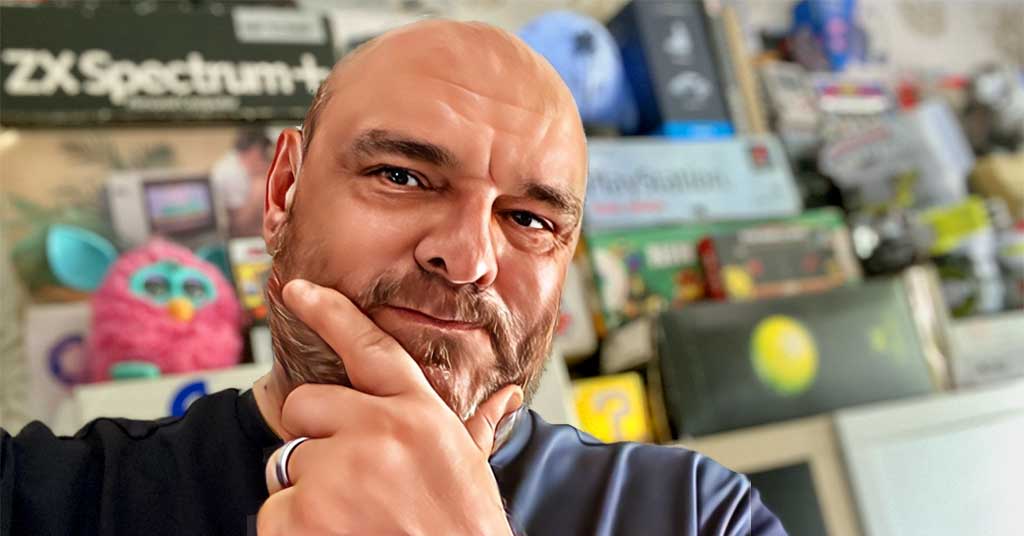Who Am I?
Hello, and welcome to my site. My name is Craig Pickles. I have over 30 years of professional experience in Project Management, SEO, Digital Marketing and Development.
This post is a brief history of me, starting with how I became interested in the techy computery stuff to where I am today, with a little bit in between...
I was born in Hull and in my early childhood moved to Bridlington where I was brought up as a relatively normal child in most ways... That was until we went on a family holiday to Blackpool and I spotted a brand new thing called "a computer" in the window of WHSmiths... This computer was, in fact, the newly released Sinclair ZX81 and it looked amazing. At the ripe old age of 11, I had no idea what it was for, or what it did... But you plugged it into the telly and it had a keyboard, and that's the kind of thing they had on Space 1999, the favourite TV programme of an 11-year-old boy like me so it sounded like the future. I added it to my Christmas list and Santa brought it to me on Christmas morning... I was a lucky boy!
The Sinclair ZX81
The ZX81 had just 1KB of ram as standard (imagine that, everything had to fit in 1024 bytes or characters) but mine came with a ram pack you stuck in the back which upgraded it to a truly massive 16KB. I had no idea what this meant at the time, but the ram pack pretty much cost the same amount as the computer itself so it had to be good right? What I did know was that the extra ram allowed me to play better games (3D Monster Maze anyone?). The games... They weren't great, even in their fuzzy black and white on a small TV glory. So I sat at that little flashing prompt and wondered what else you could do with this thing... Luckily, this computer came with a manual, the size of a novel, which detailed every BASIC command and function the computer has (imagine if every console or computer came with a language such as BASIC or Python built in and a manual, how many children would become interested in actually making it do something instead of mindlessly playing on it? Maybe a topic for another article one day?)
This was amazing! I learnt how to print something on the screen, then take an input and print that, then print my name on the screen 30 times or until a key press, then simple calculators like "how many days old are you". I did all this without realising I was actually learning about variables, loops, strings and mathematical functions. This, as they say, is history!
The ZX Spectrum
The next year, at Christmas, I convinced my parents that the lovely Santa needs to upgrade me to a ZX Spectrum 48K (the successor to the ZX81). This new computer was very similar to program except I learned about "Peeking" and "Poking" to make games do things they shouldn't do (infinite lives etc) but I was curious as to what was actually happening under the hood. I soon realised that I was actually changing the numbers sitting in actual memory which sparked my interest in machine code. Not that I was much good at it...
The Greatest 8-Bit Computer That Ever Existed
Good old Santa, the next computer he generously supplied me with was the amazing Amstrad CPC 6128... Now, this was a computer! Full colour, good sound (compared to the spectrum), a full 128KB of memory and a flipping disk drive! I loved this thing, I learned more Z80 machine code and learnt the very basics of writing games, programming was super fun.
As this was the boom time of the home computer, most towns had a computer club run by enthusiastic geeks (although we didn't know that term at the time). Bridlington was no exception and had a club, of which I was an avid member, meeting most Friday nights. It was at this computer club that I made a couple of friends who owned a small computer game company called 'clockwize'. It wasn't too long before they realised I had a little bit of potential and was offered a job (at 16).

The Clockwize Team (Left to right - Dean Hickingbottom, Keith Goodyer, Jeremy Fowler, Me, David Bradley, Lee Burns)
While there, I wrote a handful of games ('Grid Iron II' for Amstrad CPC and C64 and 'the Race' for Amstrad CPC) and helped with routines for a handful more. But alas, the company was ripped off by the bigger publishers and didn't last too long.

Windows Icons Mouse and Pointer!
By this time, I'd learnt more about programming and moved from Amstrad to the Amiga 500... It had a real graphical operating system, with a real mouse, moveable windows and could even multitask... Oh, and it had some amazing games. But I didn't want to spend all my time playing games on it, I wanted to create things...
I did write a couple of little things for the Amiga (Zarquat, which was a multitasking windowed space game, and megamenu, a menu system you put on a floppy disk to allow you to choose the programs from it when inserted) I preferred writing utilities, things that actually did something...
A "Real" Computer
Somewhere down the line, somehow... I managed to get my hands on an IBM PC.. The luggable Amstrad PPC 640. This machine was the forerunner to an affordable laptop and was extendable with cards you put inside the machine and had its own LCD green screen.
This machine ran Microsoft DOS and was nowhere near as graphical as the Amiga, but for some reason, I fell totally in love with this machine. It had GW-BASIC and QBasic (the standard BASIC language which you could compile to a .EXE file). Of course, the BASIC language was very familiar to me from my ZX81 and Spectrum days and so I could actually write applications.
I built an interface framework which would make windows-like effects using DOS character sets. I created a booking system for small hotels called "Home from Home" and a management system for milkmen called "Milk Roundsman"... neither of which made any money or changed the world, but I was loving programming and eventually got hold of a modern PC capable of running Windows 3.1.
Oh my! Windows was amazing, just like I was used to on the Amiga, but you could run DOS programs on it too and it was on a proper grown-up computer!
Visual Basic
The only major problem with Windows at the time was that there was very little in the way of development software. However, in those days, you could call Microsoft UK and actually talk to someone in person (Not Bill Though, I couldn't afford to ring America). I rang to find out if they had GW-BASIC for Windows... No such luck, but I was told that they were working on a piece of software called "Thunder" which was in beta and they were happy to send me a copy...
It turns out that this was actually a Beta version of what was to become Visual Basic... And I loved it! You can find out more information about 'Thunder' Here:
http://www.forestmoon.com/birthofvb/birthofvb.html
After working on Visual Basic until Version 3, I decided to look further afield for a proper programming job
The Big City
After a couple of months of looking, I landed a job in the big city of Leeds developing multimedia CD-Roms using Visual Basic. I worked in a team developing multimedia and educational software for the likes of IBM and the BBC.
It was about this time that something interesting happened, the internet was becoming a thing and I got access to it by subscribing to a dial-up service called Demon Internet. Within a year we had moved from CD-Roms to dabbling with websites. I'd started writing CGI scripts using PERL (a rudimentary scripting language) and learning Client Server programming.
Headland
It was during this time that we went as a team to an internet show in London where we just happened to meet up with a small print design company based in Nottingham that was looking to set up an internet development team. After a couple of further conversations, we went lock, stock and barrel as a full team and opened the Leeds office of Headland.
For the first 10 years, I developed using Classic ASP (a Microsoft version of BASIC for building websites) and built our first in-house content management system as well as designing and developing probably the UK's first generic bill payment site for Girobank (later to become Alliance and Leicester and then Santander).
I was promoted to Technical Director looking after the entire development team, during my time as Technical Director we worked for clients such as Alton Towers, Matalan, Phaidon, West Yorkshire Metro, Leicester City Council, Machine Mart, Snowdome, ITV, Chillfactore, and many more. I intend to write separate articles about the work we did for these companies as some of the complexities involved are far too interesting to write about in a couple of sentences here.

One of the failings of Headland was that we relied upon one client to keep us going, I won't name the client but essentially they decided to take the two massive projects that we had created, moved one in-house and deprecate the other. Which left us unable to continue as a company. So after 23 years, in 2021, I left for pastures new.
Marcrist International
Leaving Headland was strange after so many years but I quickly found another position which would take all my skills and use them to good potential.
I am Head Of Digital at Marcrist International, a premium tool manufacturer in Doncaster. I manage the digital team and am tasked with developing the digital base for the company which includes the websites, the digital marketing (email, social, SEO and PPC), the product information system and digital processes.
Getting Personal
Lastly, I now live in York with my gorgeous wife, between us we have 5 children ranging from 14 to early 30s! As we both work full-time, you can imagine we're kept busy!
I Love Techy Tinkering, Photography, Retro Gaming, Emulators, Raspberry Pi, Umbraco, Gadgets, .net, Xamarin and Unity.
Lastly, If you want to contact me, I can be found on Twitter at @YorkshireTechy so pop over and tweet hello :)
